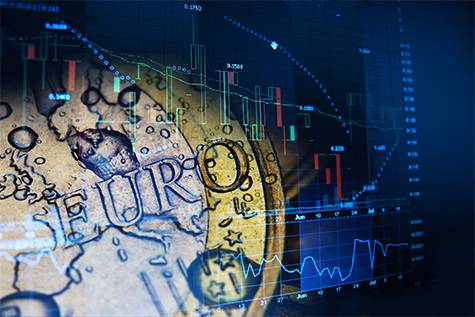In the ever-fluctuating world of currency markets, the Euro has been making headlines recently. Its value, which had plummeted to a six-month low against the US dollar, has been on the rebound. This intriguing turn of events has left many investors and analysts scratching their heads. In this article, we will delve into the Euro’s recent roller-coaster ride, its relationship with the European Central Bank (ECB), and the factors contributing to its resilience.
The Euro’s Recent Roller Coaster
The Euro (EUR/USD) is a currency pair that has seen its fair share of ups and downs. Recently, it rose by 0.25% to 1.0667 against the US dollar after enduring a significant loss of 0.8% the previous day. This marked the second consecutive loss and the most substantial drop since July 27, dragging it down to 1.0632. Such volatility has investors and traders on edge, trying to decipher the driving forces behind these abrupt fluctuations.
A History-Making Losing Streak Euro’s
The Euro’s performance this week has been nothing short of historic. It is currently on track for its longest streak of weekly losses ever recorded. This prolonged decline can be attributed to the European Central Bank’s unexpected decisions, which have sent shockwaves through the financial markets.
The ECB’s Surprise Moves
The European Central Bank, led by Christine Lagarde, has been at the center of these recent developments. In an unexpected move, the ECB decided to raise interest rates for the tenth consecutive time. This decision resulted from their ongoing battle against inflation, a growing concern in the Eurozone.
The interest rate hike amounted to 25 basis points, bringing the rate to 4.50%—the highest level seen since 2001. The ECB, in its policy press release, justified this move by highlighting that despite signs of slowing inflation, it is expected to remain elevated for an extended period. The central bank emphasized its commitment to making data-driven decisions when determining the appropriate level and duration of these high interest rates.
Lagarde’s Perspective Euro’s
Christine Lagarde, the President of the ECB, conveyed the bank’s conviction that the current interest rates would aid in controlling inflation, steering it back towards the target of 2%. She also underscored the ECB’s reliance on data as the compass for navigating the duration of these elevated interest rates. Lagarde’s leadership and the ECB’s unwavering commitment to their strategy have been key factors influencing the Euro’s performance.
Economic Outlook
Despite the recent turmoil, the ECB maintained its stance on the eurozone’s economic prospects. While they reduced growth forecasts for the year from 0.9% to 0.7%, they expressed optimism about a rebound in the second half of the year. This projection hints at a potential revival of the Euro’s strength in the near future.
The Interest Rate Gap
Another critical factor contributing to the Euro’s resilience is the interest rate gap between the US and Europe. Currently, this gap stands at 100 basis points, the narrowest since May 2022. It expected to persist until at least November 2023. However, there is a looming possibility that the Federal Reserve may increase interest rates by 25 basis points in November, potentially widening this gap once again.
In conclusion, the Euro’s recent journey in the currency markets has marked by volatility and uncertainty. The surprising decisions by the European Central Bank, coupled with the interest rate gap with the US, have all played significant roles in shaping its trajectory. As investors keep a close eye on the Euro’s movements, it is evident that its resilience in the face of adversity remains a captivating story in the world of finance.
Frequently Asked Questions
- What caused the Euro to plummet to a six-month low against the US dollar?
The Euro’s decline primarily triggered by the European Central Bank’s unexpected decision to raise interest rates and its concerns about inflation in the Eurozone. - How has Christine Lagarde’s leadership influenced the Euro’s performance?
Christine Lagarde’s leadership played a crucial role in guiding the ECB’s strategy and reassuring investors that the current interest rates aimed at controlling inflation and stabilizing the Euro. - Why is the interest rate gap between the US and Europe significant for the Euro’s performance?
The interest rate gap indicates the difference in interest rates between the US and Europe. It affects currency flows and can impact the Euro’s relative strength against the US dollar. - What can we expect for the Euro’s future performance based on the ECB’s economic outlook?
The ECB maintains optimism about a rebound in the eurozone’s economy in the second half of the year, which could potentially lead to an improvement in the Euro’s performance. - How can investors navigate the Euro’s volatility in the currency markets?
To navigate the Euro’s volatility, investors should stay informed about central bank decisions, economic data, and global events that can influence currency movements. Diversifying their portfolios can also mitigate risks associated with currency fluctuations.

